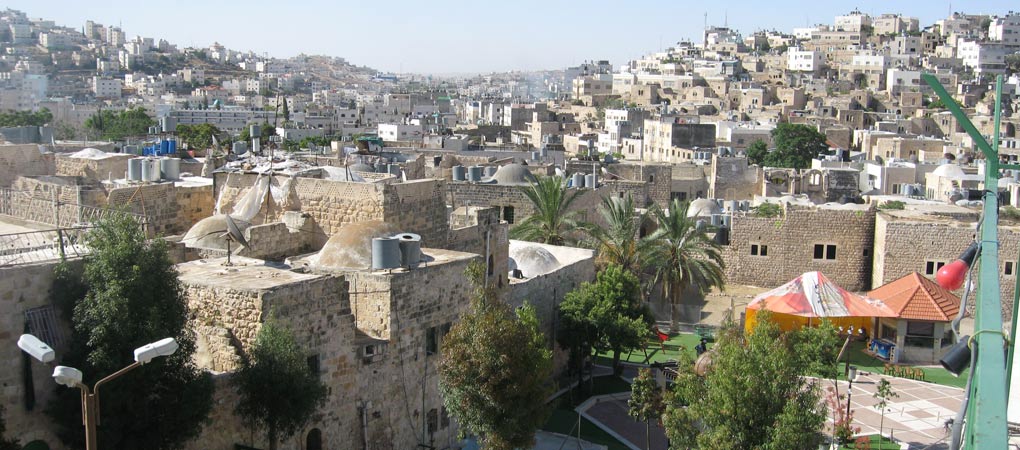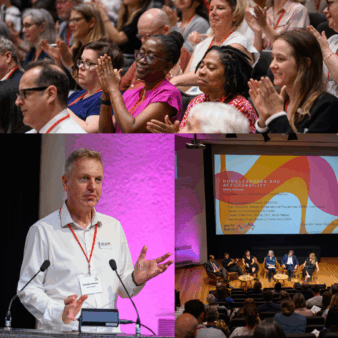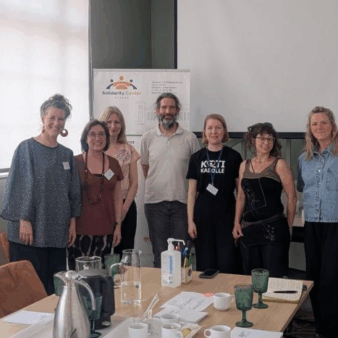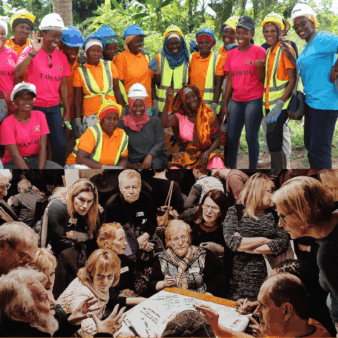
Image: Hebron Rehabilitation Committee
CEO of World Habitat David Ireland reflects on the Hebron Rehabilitation Project’s restoration of historic buildings, infrastructure and life in a city that had nearly disappeared.
Today, however, Hebron’s residents once again face mounting pressure to flee their homes – a fate that would undo years of remarkable work and devastate not just the city, but the hopes and aspirations of Palestinians everywhere.
The unconscionable loss of life, destruction of homes and infrastructure and immense suffering inflicted by the Gaza war are so vast that there has been little public discussion about what happens next to physically reconstruct the wreckage. One day, when the bombs and bullets have stopped, the gargantuan task of rebuilding will begin. Cities that have been destroyed by war can live again. Some like Ypres in Belgium are rebuilt as carbon copies of what had been lost. Berlin, Beirut, and Hiroshima reinvented themselves into somewhere new. Others like Grozny and Mariupol are designed in the conquerors image. Palestine has seen cities rise from the ashes before. Jerusalem was destroyed and rose again twice. But the recent regeneration of the Old City of Hebron, located in the southern part of the West Bank highlights the skills and understanding that Palestinians have for rescuing their own cities.
I had the privilege of visiting the city in 2015 shortly after Hebron Rehabilitation Committee (HRC) won a World Habitat Award. I witnessed HRC’s comprehensive programme of renovation, conservation and economic development, which not only revitalised streets and buildings, but also empowered a community. The skills and determination of Palestinians to succeed under unimaginably difficult conditions left a marked impression on me.
Over the past decade, HRC has continued to respond to a multitude of challenges, but the current bloodshed in Gaza threatens to derail its success. Families in the Old City are reportedly confined to their homes, schools and businesses are closed indefinitely and illegal Israeli settlements in the surrounding countryside have increased. Under these circumstances, residents may understandably want to seek safety outside of the historic centre, but in doing so, they may find themselves unable to return. Now more than ever, the Hebron Rehabilitation Project needs support to preserve and continue its exceptional achievements – for Hebron’s residents, Palestinians and the world at large.
The Old City
Hebron is one of the most ancient cities in the world, continuously inhabited for over 5,000 years. The Old City is a dense network of winding narrow passages and beautiful buildings with vaulted ceilings and arched doors hewn from local yellow limestone. It has a wealth of history and culture and is home to some of the most important sites for both Muslim and Jewish religions.
For the past 45 years, Israeli settlements (the legality and legitimacy of which are opposed by the international community) have been developed within the centre of the Old City with accompanying security zones. Palestinians are prohibited from entering these areas. Military checkpoints sprung up, houses were evacuated and roads were blocked off. Over time, these restrictions and curfews gradually reduced the Old City’s Palestinian population from 7,500 to just 400, leaving only those who were socially marginalised and unable to afford to live elsewhere. Many streets were abandoned, and businesses and shops were closed, either because Palestinian residents were afraid of the settlers or because Israeli authorities blocked them for security reasons. The Old City became a crumbling ghost town.
Restoring a site of global importance
Hebron Rehabilitation Committee started work to save the Old City in the late 1990s, under the mandate of the Palestine Liberation Organisation. It was tasked with rescuing the cultural riches of the city, bringing abandoned buildings back to life, improving living conditions and sparking economic opportunities. Ultimately it aimed to resist further Israeli settlements within the Old City by inhabiting empty buildings with former residents, who would re-build their lives there and invest in its heritage.
But it hasn’t been easy. What would be considered relatively uncontroversial restoration in most other countries, can quickly set off arguments about sovereignty in Hebron. Who gets to decide what’s to be renovated? Who controls the building being renovated? In response, HRC established a formidable legal department to tackle disputes with Israeli authorities, monitor and document Israeli occupation violations, raise awareness among residents about their rights, and engage with international human rights institutions.
Over the last 25 years, the Committee has overseen a renaissance. One thousand houses have been renovated, cobbled streets re-laid, and a multitude of historic buildings brought back to life. A museum and a hotel have been opened to encourage visitors and promote economic activity. Public parks and playgrounds have been created and hundreds of trees planted. One hundred and twenty shops and 10 new schools have opened and others have expanded into neighbouring empty buildings that were also renovated.
Some of HRCs work has involved rethinking old buildings. Traditional Palestinian ‘housh’ complexes with shared spaces for extended families, have been turned into self-contained apartments with separate entrances and facilities. This fresh take on planning and renovation has encouraged a greater diversity of residents.
The Committee also recently opened a vocational academy which so far has trained fifty young people from the city in renovation skills including architectural restoration, building reinforcement, plastering, tiling, painting, carpentry, and traditional blacksmithing. The academy is thought to be the first of its kind in the Middle East. Most graduates have been employed in renovation projects in the Old City, and the academy will continue to train more people dedicated to the restoration of Hebron for years to come.
Previous residents have been attracted back and families who were trapped there during its lowest ebb due to poverty, are all the richer for this influx. HRCs efforts were recognised by UNESCO and in 2017 the city was made a World Heritage Site, albeit included in the list of those in danger because of the ongoing conflict.
Looking to the future
Life has returned to the Old City, but it is impossible to ignore the threat it is facing. It is not unusual to see pathways covered by metal netting hung between buildings to protect the street and inhabitants from settlers throwing rocks and rubbish at them. The October 7th terrorist attack by Hamas and subsequent devastation of Gaza by Israel has raised tensions to heights not seen for years. Curfews have returned and residents are confined to their homes. Israeli soldiers and armed settlers in military uniform patrol the streets. Rooftop sentry posts scrutinize for any movement from Palestinian homes.
With the outlook so desperately bleak for Gaza and many Palestinians, it is even more urgent to secure the future success of HRC’s work. What began as a small project in the 1990’s, has developed into an internationally awarded programme that housing and cultural heritage experts, urban planners, funding organisations, social justice activists and emerging housing projects can learn much from.
A decade after HRC was awarded with a World Habitat Award, it is remarkable to see that the mission to save Hebron is still active in the face of such intense hostility. There has been so little good news from Palestine, but the rehabilitation of the Old City of Hebron is a rare beacon of hope that we must keep alive.




Join the discussion